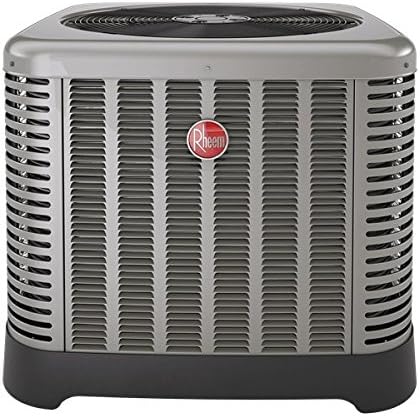When it comes to heating, ventilation, and air conditioning (HVAC) systems, efficiency and comfort are paramount. A well-chosen HVAC unit not only ensures optimal temperature control but also saves energy and reduces costs. For those considering a Bard 5-ton HVAC unit, understanding how to maximize its efficiency by selecting the right square footage is crucial. This article will delve into the factors that influence this decision, provide guidance on how to determine the appropriate square footage, and share tips for achieving maximum efficiency.
The Importance of Proper Sizing

One of the most critical aspects of HVAC installation is selecting a unit that is appropriately sized for the space it will serve. Choosing the right square footage for your Bard 5-ton unit can significantly impact:
- Energy Efficiency
- Comfort Levels
- Equipment Longevity
- Overall Costs
Using a unit that is too small will struggle to cool or heat your space, leading to increased energy consumption and wear on the system. Conversely, an oversized unit will cycle on and off frequently, causing inefficiency and discomfort.
Understanding the Bard 5-Ton HVAC Unit
Bard Manufacturing Company is renowned for its high-quality HVAC solutions, particularly in commercial and industrial applications. The Bard 5-ton unit is designed to handle a significant cooling load, making it suitable for larger spaces. However, the term “5-ton” does not directly correspond to the square footage it can efficiently serve, as various factors come into play.
Factors Influencing HVAC Sizing
When determining the right square footage for your Bard 5-ton HVAC unit, several factors must be considered:
- Climate Zone: The local climate significantly impacts the cooling load. Areas with high temperatures and humidity require more cooling capacity.
- Insulation Quality: Well-insulated spaces retain cool air more effectively, potentially allowing for a smaller unit.
- Ceiling Height: Higher ceilings can increase the volume of air that needs to be cooled, affecting the size of the HVAC needed.
- Window Efficiency: The number and type of windows can affect heat gain; larger or less efficient windows may require a larger system.
- Occupancy Levels: More people generate more heat; hence, spaces with higher occupancy may need a larger unit.
- Appliance and Equipment Load: Equipment that generates heat, such as computers or industrial machines, affects the overall cooling needs.
Calculating the Correct Square Footage

To determine the right square footage for your Bard 5-ton HVAC unit, you can utilize the following steps:
1. Calculate Your Space’s BTU Requirements

BTUs (British Thermal Units) measure the amount of heat required to raise the temperature of one pound of water by one degree Fahrenheit. For cooling purposes, the general rule of thumb is:
- 1 ton of cooling = 12,000 BTUs
Thus, a 5-ton unit offers 60,000 BTUs. To get a rough estimate of the square footage it can effectively cool, consider the following:
- Residential: Approximately 600-800 square feet per ton (based on average conditions)
- Commercial: Approximately 400-600 square feet per ton (due to increased heat loads)
Using these figures:
- Residential: A 5-ton unit can cool approximately 3,000 to 4,000 square feet.
- Commercial: A 5-ton unit can cool approximately 2,000 to 3,000 square feet.
2. Adjust for Individual Factors

After calculating the basic square footage, adjust based on the factors mentioned previously:
- Increase capacity for poor insulation or high sun exposure.
- Reduce capacity if the space is well-insulated or shaded from direct sunlight.
- Account for additional heat-generating equipment or high occupancy levels.
Case Study: Real-World Application

Consider a commercial office space of 2,500 square feet located in a hot climate with significant sun exposure through large windows. The office has average insulation quality and houses around 30 employees, all using computers and other heat-generating equipment. Here’s how to apply the sizing process:
- Base BTU Calculation: 2,500 sq. ft. ÷ 400 sq. ft. per ton = 6.25 tons needed
- Adjust for Insulation and Equipment: Given the sun exposure and equipment load, it might be prudent to choose a 7-ton unit to ensure comfort and efficiency.
In this case, while a 5-ton unit is insufficient, it illustrates the importance of considering individual factors beyond simple square footage calculations.
Maximizing Efficiency with Your Bard 5-Ton Unit

Once you’ve chosen the right size unit, maximizing efficiency becomes the next goal. Here are several strategies to consider:
- Regular Maintenance: Schedule routine HVAC maintenance to keep the system running efficiently. This includes changing filters and checking refrigerant levels.
- Smart Thermostats: Implement smart thermostats to optimize temperature settings based on occupancy and time of day.
- Seal Ductwork: Ensure that ductwork is properly sealed to prevent air leaks, which can waste energy.
- Upgrade Insulation: Invest in quality insulation to reduce the load on your HVAC system.
- Use Zoning Systems: For larger spaces, consider zoning systems to direct airflow where it is needed most.
Selecting the right square footage for your Bard 5-ton HVAC unit is a critical step in maximizing efficiency and comfort in your space. By understanding the factors that influence sizing, performing accurate calculations, and implementing strategies to enhance efficiency, you can make a substantial difference in energy consumption and overall comfort. Remember that a well-sized and maintained HVAC system not only saves money but also contributes to a more sustainable future. By applying the insights shared in this article, you can ensure that your HVAC investment pays off in the long run.

